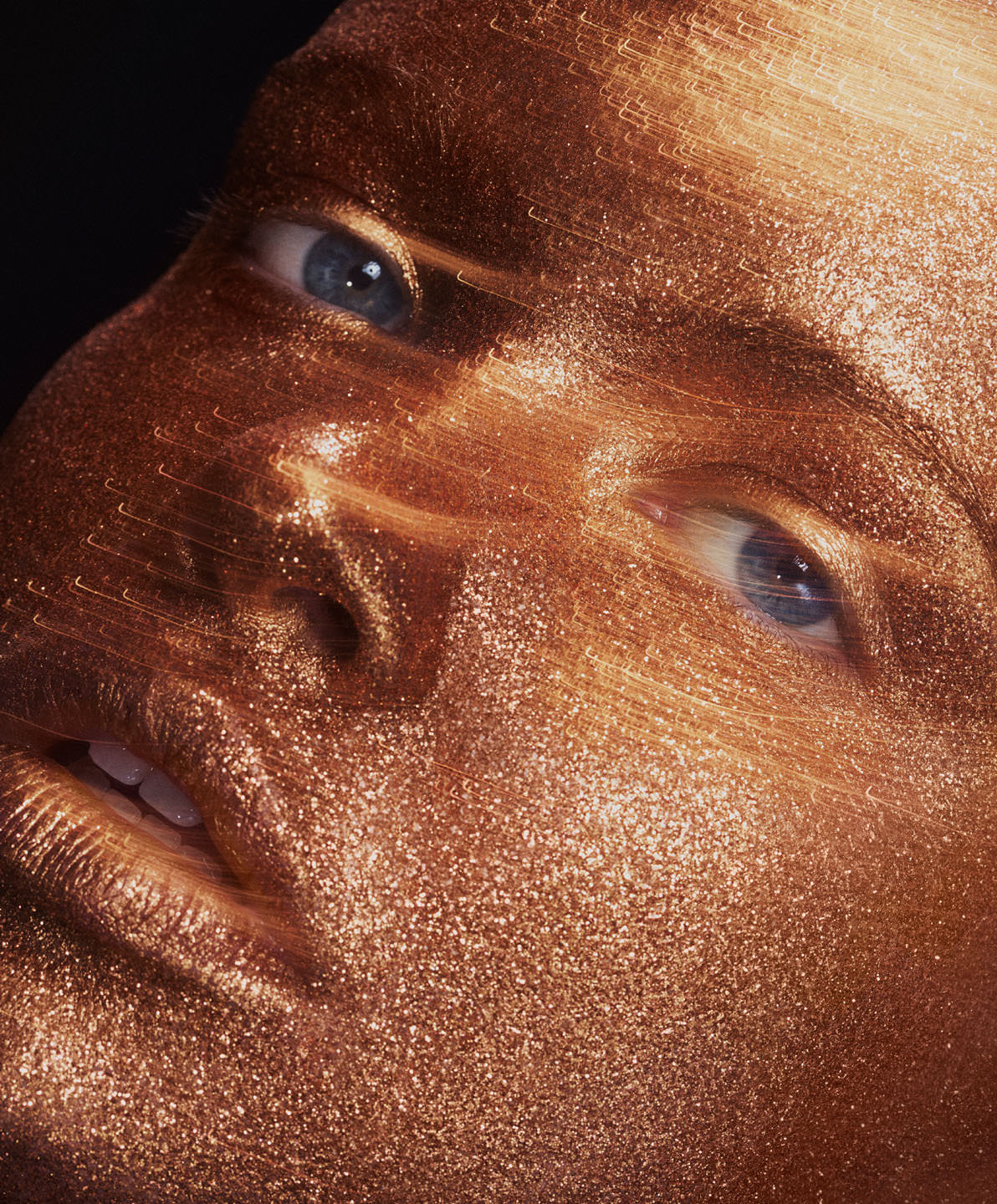Once upon a time, pale skin was fashionable because it suggested you were refined and had no need to work in the fields. Then, at the turn of the 20th century, research emerged suggesting that UV rays could be helpful in treating disease, and by the 1920s, fashionable figures such as Coco Chanel, followed by Betty Grable and Rita Hayworth in the 1940s, were seen with tanned skin. So began the trend for tanning—real, or faked with teabags or gravy granules.
Today, we know that a tan is often anything but healthy, and there’s no need to reach for the orange pekoe if you want to pretend you’ve got one. You can go for the all-over look with self-tanners, but they can turn out streaky or tangerine-coloured if you don’t pick a good one or apply it correctly. A far easier, less risky, and more subtle approach is to break out the bronzer, which is applied to specific parts of the skin, not all over, and can be removed in seconds.
“I really noticed bronzer becoming fashionable in the 1980s when I was still a teenager,” says makeup artist Andrea Claire. “I remember that California sun-kissed look, like Farrah Fawcett. A lot of women want to have that kind of glowy, bronze skin because it gives that idea that, you know, I’m healthy; I’m outside; I was on holiday.”
The first bronzer Claire recalls is Guerlain’s Terracotta Bronzing Powder, which came out in 1984. Back then, it was just one shade, though it’s now available in six. These days, you can buy bronzer as a liquid, cream, or powder, in virtually any hue, to suit almost any skin tone. So where do you start if you’ve never used it before?
Claire recommends that when choosing a colour, you should think about what happens to your skin when it’s exposed to the sun. A useful rule of thumb is to go a couple of tones darker than your natural shade. For brown or black skin, some brands now have comprehensive shade ranges, but makeup artist Sandra Hwang particularly likes Haus Labs Power Sculpt Velvet Bronzer. “It comes in many of the darker tones you can use to create a dimensional look,” she explains. She also likes Fenty Beauty Pro Filt’r Soft Matte Powder Foundation and Make Up For Ever HD Skin Matte Velvet, which have even broader shade ranges (50 colours and 33 colours, respectively), and while not classified as bronzers, they can be used the same way.
When it comes to the finish, you can choose a matte product, such as Benefit’s Hoola, and then add a highlighter if you like (Hwang prefers a no-shimmer finish for men). Alternatively, opt for one that comes with glow included, like Bobbi Brown’s Shimmer Brick.
Powder products give you the most staying power, but liquids and creams are more forgiving. They’re sheer, so you don’t need to choose a perfect shade, and they are blendable so needn’t be applied as precisely as powder. If you’re looking for a cream with shimmer, there’s Charlotte Tilbury Beautiful Skin Sun-Kissed Glow Bronzer, while Milk Makeup Matte Bronzer comes in a stick that can be swiped onto skin. For liquids, there’s Armani’s Luminous Silk Glow, which has SPF 15 (though this won’t suffice as your only sun protection) or Glow Recipe’s Watermelon Glow Niacinamide Hue Drops—the brand’s bestselling serum, Dew Drops, but with a tint.
Powder and cream bronzers should generally be applied to the areas of the face that are naturally exposed to sun: forehead, tops of cheeks, nose bridge, and chin. Liquids can be used the same way or be added to foundation or moisturizer for an all-over glow. With a powder, you need a brush. Hwang favours a nice fluffy one. You can also use it for liquids and creams or apply them with your fingertips. “They’ll warm up that product and help it move more easily on skin,” she says.
If you want, you can add blusher to the apples of the cheeks and highlighter to the tops of cheekbones, temples, and brow bones. Claire says you can even skip foundation for a beautiful, natural, sun-kissed look. “In the warmer months, skin might be a little better in terms of things like pimples, so you don’t necessarily need foundation,” she says. “I find—it’s the fault of beauty influencers—too many women are layering way too many products on their skin. They’re sitting in front of a ring light and showing you how to use that makeup, and that is a very controlled lighting, but when you turn that ring light off and go outside, it’s no longer that, and it can be a bit garish.” Her top tip for all makeup, not just bronzer? Always apply it in natural lighting, by a window, for example, or at least check it under natural lighting before you go anywhere. “That way, you don’t look like you’re about to perform at a kid’s birthday party.”
Makeup by Timothy Hung. Nails by Miz Wang. Photo Assistant: Keagan Archer-Hastie. Model: Kai Hemmingson for Family Management. Read more from our Summer 2024 issue.









